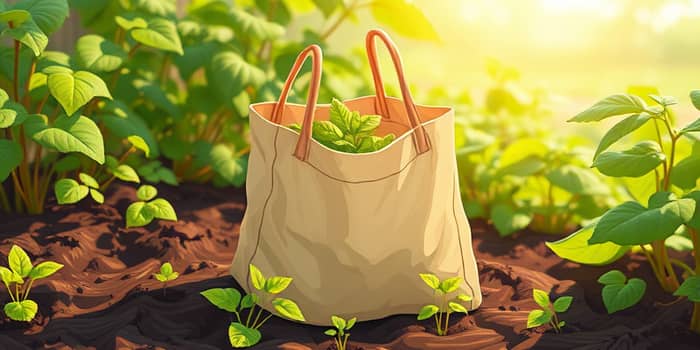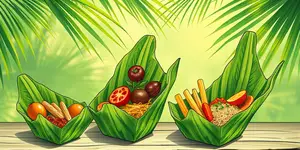Imagine carrying home your groceries in a bag that not only serves its purpose today but also nurtures new life in your garden tomorrow. This revolutionary concept tackles the ever-growing plastic waste crisis by offering a bag you can plant after use.
From sustainable materials to innovative design, these plantable grocery bags are changing the way we think about single-use packaging—and inspiring a deeper connection between our purchases and the planet.
Understanding the Plastic Crisis
The world produces over 300 million tons of plastic each year, with shopping bags contributing a significant share. Traditional plastic bags can persist in the environment for centuries, posing threats to wildlife, polluting waterways, and fragmenting into toxic microplastics.
By contrast, sustainable alternatives to single-use plastic aim to close the loop on our consumption patterns. Plantable grocery bags illustrate how innovation can generate tangible benefits for soil health and biodiversity, rather than perpetuating waste.
How Plantable Grocery Bags Work
These bags start life like any other reusable or one-time-use carrier—durable enough to hold your groceries. After emptying it, you simply transform the bag into a planter.
- Use: Pack fruits, vegetables, deli items or packaged goods as usual.
- Plant: Cut open the bag, add water if provided, and tuck it into soil or a pot.
- Grow: Within days, sprouts emerge. Over months, the bag decomposes to feed roots.
This seamless journey from shopping to gardening embodies the concept of a circular, waste-free lifecycle that many of us strive to achieve.
Materials and Innovative Compositions
Plantable grocery bags are crafted from a variety of eco-friendly raw materials designed to biodegrade under proper conditions:
- Bioplastics derived from corn starch or vegetable oils provide flexibility.
- Kraft paper reinforced with a starch coating adds structural support while feeding the soil.
- Emerging prototypes use natural polymers like shrimp chitin or fungal mycelium to expand the material palette.
Some versions even embed a blend of soil, paper, and seeds within the bag walls, turning each shopping trip into an opportunity to cultivate herbs, flowers, or vegetables.
Certifications and Trustworthy Labels
Not all “biodegradable” bags deliver on their promises. Look for widely recognized certifications to ensure genuine compostability:
- ASTM D6400 (United States compostability standard)
- EN 13432 (European standard for industrial composting)
- BPI Certification (Biodegradable Products Institute)
- USDA Biobased Product Label
These logos guarantee the bag will break down into carbon dioxide, water, and biomass without leaving harmful residues or microplastics when processed correctly.
Real-World Impact: Numbers and Statistics
By replacing conventional plastic, plantable grocery bags can dramatically reduce pollution and greenhouse emissions. In commercial composting facilities, they decompose within 100–180 days, compared to over 500 years for a standard plastic bag.
Such data underscores the potential of these bags to significantly cut plastic waste and pollution while fostering healthier soil ecosystems.
Limitations and Considerations
While the promise of plantable bags is compelling, there are factors to keep in mind:
- Composting Conditions Matter: Industrial facilities provide optimized heat, moisture, and oxygen. Home compost piles and garden soil may require more time and care.
- Proper Disposal Pathways: Mixing compostable bags with regular recycling can contaminate plastic streams. They belong in compost bins or buried directly in soil.
- Label Clarity: Terms like “biodegradable” and “plantable” are not interchangeable. Read packaging carefully to ensure the bag meets your composting setup.
Looking Ahead: Future Innovations
Researchers are pushing boundaries to create new materials that break down even faster in home gardens. From novel biodegradable materials like chitin to soil-activating fungal polymers, the next generation of plantable bags may require no specialized facilities at all.
Brands are also experimenting with embedded sensor tags that signal when decomposition is complete, and heat-sealing techniques to lock in potting mix until use.
How You Can Make a Difference
Embracing plantable grocery bags is a simple yet powerful way to reduce your plastic footprint and support the regeneration of our planet. Here’s what you can do today:
- Choose certified compostable bags whenever possible.
- Start a small herb or flower garden using your old grocery bags as planters.
- Share your experiences on social media to inspire others toward more mindful consumption habits.
- Encourage local retailers to stock plantable options and educate customers on proper disposal.
Together, we can transform a routine shopping trip into an act of regeneration—one bag and one seedling at a time.
References
- https://www.goodstartpackaging.com/compostable-bags/plastic-shopping-bags/
- https://www.factorydirectpromos.com/category/reusable-bags/biodegradable-bags/
- https://greenpaperproducts.com/collections/compostable-bags
- https://www.igreengadgets.com/product/ecobag/
- https://biogreenbags.com/compostable-grocery-bag/
- https://ecofreek.com/biodegradable/biodegradable-plastic-bags/
- https://trade.ec.europa.eu/access-to-markets/en/content/labelling-and-packaging
- https://magazine.byu.edu/article/biodegradable-bag/










